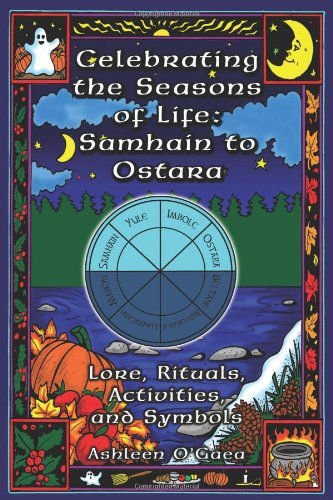Another traditional symbol of Imbolc is the plough (plow). In some areas, this is the first day of ploughing in preparation of the first planting of crops. A decorated plough is dragged from door to door, with costumed children following asking for food, drinks, or money. Should they be refused, the household is paid back by having its front garden ploughed up. In other areas, the plough is decorated and then Whiskey, the "water of life" is poured over it. Pieces of cheese and bread are left by the plough and in the newly turned furrows as offerings to the nature spirits. It is considered taboo to cut or pick plants during this time.
Various other names for this Greater Sabbat are Imbolgc Brigantia (Caledonni), Imbolic (Celtic), Disting (Teutonic, Feb 14th), Lupercus (Strega), St. Bridget's Day (Christian), Candlemas, Candlelaria (Mexican), the Snowdrop Festival. The Festival of Lights, or the Feast of the Virgin. All Virgin and Maiden Goddesses are honored at this time.
Deities of Imbolc:
All Virgin/Maiden Goddesses, Brighid, Aradia, Athena, Inanna, Gaia, and Februa, and Gods of Love and Fertility, Aengus Og, Eros, and Februus.
Symbolism of Imbolc:
Purity, Growth and Re-Newal, The Re-Union of the Goddess and the God, Fertility, and dispensing of the old and making way for the new.
Symbols of Imbolc:
Brideo'gas, Besoms, White Flowers, Candle Wheels, Brighid's Crosses, Priapic Wands (acorn-tipped), and Ploughs.
Herbs of Imbolc:
Angelica, Basil, Bay Laurel, Blackberry, Celandine, Coltsfoot, Heather, Iris, Myrrh, Tansy, Violets, and all white or yellow flowers.
Foods of Imbolc:
Pumpkin seeds, Sunflower seeds, Poppyseed Cakes, muffins, scones, and breads, all dairy products, Peppers, Onions, Garlic, Raisins, Spiced Wines and Herbal Teas.
Incense of Imbolc:
Basil, Bay, Wisteria, Cinnamon, Violet, Vanilla, Myrrh.
Colors of Imbolc:
White, Pink, Red, Yellow, lt. Green, Brown.
Stones of Imbolc:
Amethyst, Bloodstone, Garnet, Ruby, Onyx, Turquoise.
Activities of Imbolc:
Candle Lighting, Stone Gatherings, Snow Hiking and Searching for Signs of Spring, Making of Brideo'gas and Bride's Beds, Making Priapic Wands, Decorating Ploughs, Feasting, and Bon Fires may be lit.
Imbolc , A hope-filled celebration welcoming the returning light and the promise of spring.

